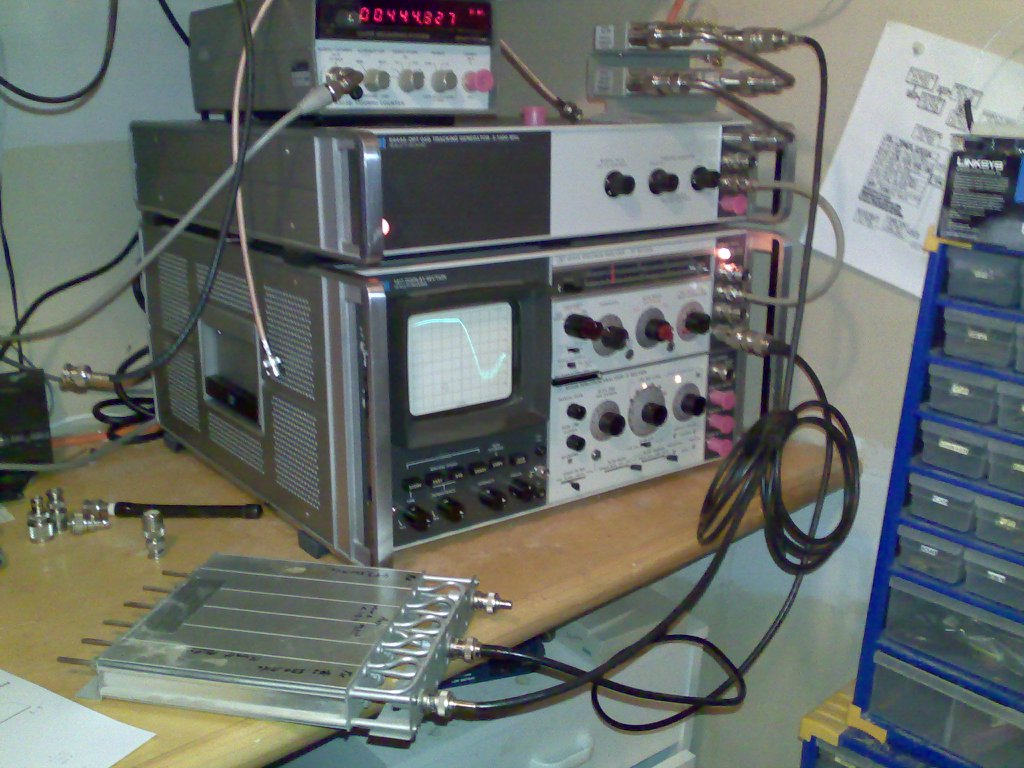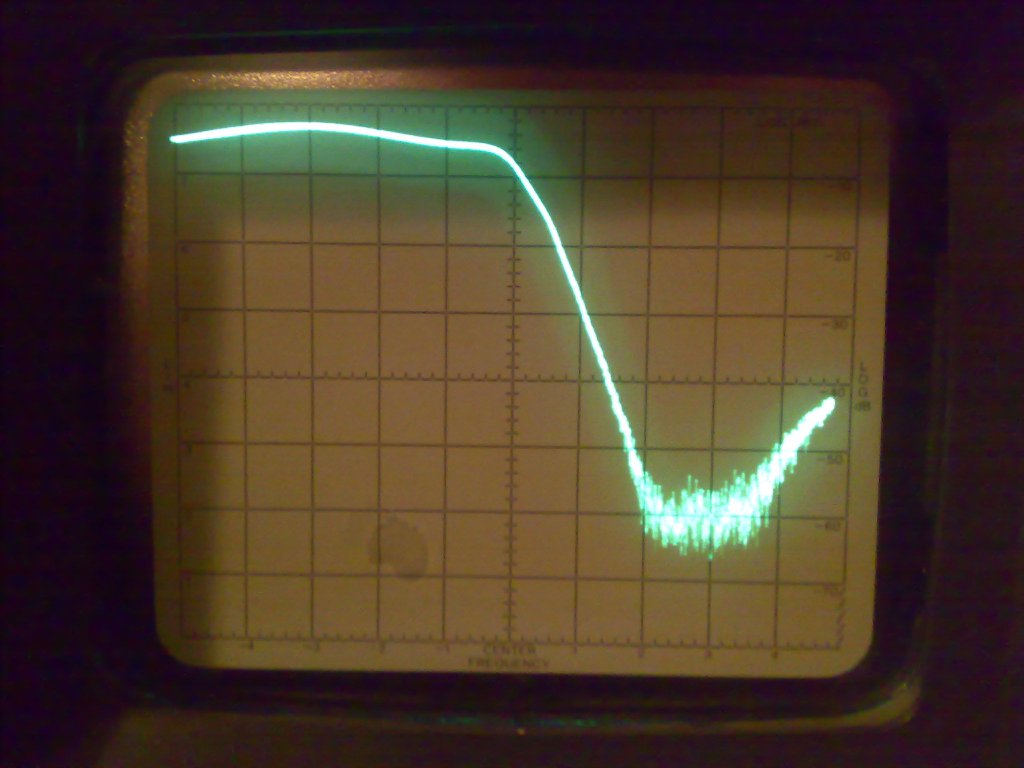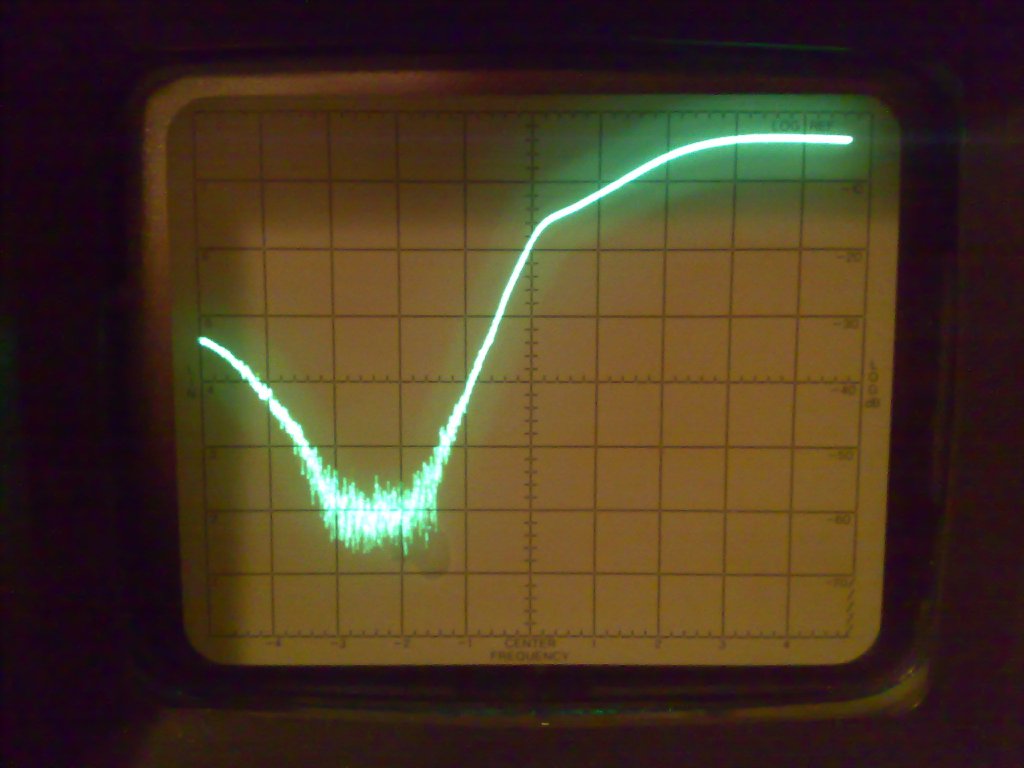A ham radio UHF repeater has to simultaneously transmit on one frequency while receiving on a nearby one (5 MHz away). This means the Tx and Rx have to be highly isolated from each other, otherwise it's a bit like pointing a megaphone in your ear — the transmitting repeater won't be able to hear its own input! This is accomplished via a duplexer, which has to be manually tuned.
In this case I happened to have a duplexer tuned by a friend of mine (Andy VE3GTU) for 442.350 MHz Tx and 447.350 Rx. Its performance can be readily checked by using the tracking generator feature of the HP spectrum analyzer: tune it for 0dB at the top of the scale, and check each port.

The analyzer is tuned to 444.85 MHz with 1 MHz per division horizontally and 10dB per division vertically. Thus 442.350 (Tx) is 2.5 divisions to the left, and 447.350 (Rx) is 2.5 divisions to the right of the vertical centreline.
The signal is injected into the antenna port and the analyzer is looking at the Tx port. The Rx port has a 50 ohm terminator. Notice that there is a slight peak on the Tx frequency, and it's about -60dB on the Rx frequency. Nice! Actually it might go below that; the analyzer is just showing noise down there.

Same thing, but with the terminator on the Tx port and looking at the Rx port. This time, the Tx frequency is about -60dB and the Rx is about -3dB. Again, nice!

Still reading? You're hardcore! Then check out this page of abusing a spectrum analyzer as a cheap FM radio